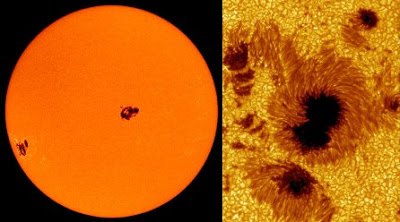While he was not the inventor of the telescope, Galileo Galilei maximized the potential and remarkably enhanced the potential of the device. In 1609, he found out about the spyglass and started exploring how to make them. Galileo ground and polished his own lenses, enabling him to view things with higher magnification of up to eight to nine times. With that, he was able to see and discover magnificent things outside of our own planet.
Galileo is renowned for his observations using the telescope and naked-eye observations of the sky and the heavens. He discovered the massive moons of Jupiter, the phases of Venus, the stars of the Milky Way, and the mountains of the Moon.
But, one significant thing Galileo dared to do is to look directly at the Sun. It was not one of his greatest decisions, but Galileo did it with the utmost care and caution. He avoided looking at the Sun directly while it was at its peak or when it was still high. Instead, he made his observations during sunrise or sunset, or during cloudy days when the Sun rays were not that intense.
Whenever the Sun is at its low, its rays are required to pass through much more distance to reach us. Thus, making the Sun less extreme, provided it with it a reddish glow, and made it easier to observe. Combined with the use of fogs and clouds, Galileo was able to discover the dark regions of the Sun – the sunspots.
Galileo then shared his discovery about the sunspots in Italy and other astronomers, academics, and theologians in other countries. It stirred debates on whether these dark regions in the Sun were only satellites revolving around it or if they are real spots on its surface, especially that the Sun was believed to be a pristine, unyielding body.
With all the questions raised on how such dark spots could grow, stain, and move around the Sun’s body, Galileo continues to watch the Sun to study its characteristics further. Knowing that the magnified rays of the Sun can cause him to be blind, he instead let solar images reflect onto pieces of paper, and contrasted light made by the sunspots.
Soon enough, he was able to distinguish a specific batch of those dark regions coming back after it had disappeared a few weeks ago. With that, he was able to conclude the Sun’s monthly rotation by tracking their movement. Then, with continuous observation of the sunspots, he discovered them moving upwards or downward. Galileo then said that such changes occur as the planet orbits around the Sun on an inclined axis.
It is known how often did Galileo observed the Sun directly, but we know he made several ones through his Letter on Sunspots. At the latter part of his life, Galileo did suffer from blindness, though, it was 20 years later after he made his magnificent observation and discoveries.
Galileo’s work undoubtedly served as the foundation of modern astronomy, space probes, and telescopes. If you’re looking to replicate Galileo’s feat or just simply want to look at the Sun, remember that observing it directly is extremely risky. Even on an eclipse where its power is less intense, your eyes can still suffer from irreparable damage. You can sure take quick glances or wear appropriate gear in order to avoid such consequences.
More Readings
Galileo Galilei (Wikipedia)
Related Posts
-
- How do we know that fusion reaction takes place on the Sun?
- Who invented solar cells to harness the Sun’s energy?
- What is the source of the Sun’s energy output?
- What is the chemical composition of the Sun? How do astronomers identify the types of elements it contains?
- Why can’t you look directly at an eclipse?

